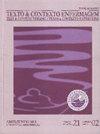COVID-19大流行期间巴西公立大学护士教育工作者的疲劳分析
Q2 Nursing
引用次数: 0
摘要
目的:分析巴西公立大学护士教育工作者在2019冠状病毒病大流行期间教授在线和混合课程时的疲劳情况。方法:对2021年7月至11月在联邦和州立公立大学教学的318名护理教育工作者进行定性、横断面研究。调整和验证版本的三维工作疲劳量表(3D-WFI)被用来评估疲劳。比较均数,采用Bonferroni检验和t检验进行方差分析。有统计学意义的变量(p<0.05)保留在模型中。结果:平均42人(±9.4人);女性居多,279例(87.7%);有子女的225人(70.8%);313人(98.4%)表示在网上教学的同时还做家务。除了本科课程的活动外,88名(27.7%)参与者还参加了研究生课程的活动。在课程模式(完全在线或面对面,或混合)和维度之间发现了关联:身体疲劳(p=0.041),精神疲劳(p=0.001)和情绪疲劳(p=0.019),以及在照顾孩子并帮助他们完成学校任务的同时还在线授课和身体疲劳(p=0.012),精神疲劳(p=0.001)和情绪疲劳(p=0.000)。结论:课程模式与疲劳三个维度(身体、精神、情绪)之间存在显著差异,表明参与者在工作期间和工作后都存在身体和精神疲劳。本文章由计算机程序翻译,如有差异,请以英文原文为准。
ANALYSIS OF FATIGUE AMONG NURSE EDUCATORS IN BRAZILIAN PUBLIC UNIVERSITIES DURING THE COVID-19 PANDEMIC
ABSTRACT Objective: to analyze fatigue among nurse educators affiliated with Brazilian public universities while teaching online and hybrid courses during the Covid-19 pandemic. Method: qualitative, cross-sectional study addressing 318 nurse educators teaching in federal and state public universities between July and November 2021. The adapted and validated version of the Three-Dimensional Work Fatigue Inventory (3D-WFI) was used to assess fatigue. The means were compared, and variance analysis (ANOVA) was performed with the Bonferroni test and t-test. The statistically significant variables (p<0.05) remained in the model. Results: the participants were 42 (± 9.4) on average; most were women, 279 (87.7%); 225 (70.8%) had children; and 313 (98.4%) reported performing house chores along with online teaching. In addition to the activities concerning undergraduate programs, 88 (27.7%) participants also performed activities in graduate programs. An association was found between course modality (entirely online or face-to-face, or hybrid) and the dimensions: physical fatigue (p=0.041), mental fatigue (p=0.001), and emotional fatigue (p=0.019), and between taking care of children and help them with school tasks while also teaching classes online and physical fatigue (p=0.012), mental fatigue (p=0.001), and emotional fatigue (p=0.000). Conclusion: the significant differences between course modality and the three dimensions of fatigue (physical, mental, and emotional) showed that the participants experienced physical and mental fatigue during and after work.
求助全文
通过发布文献求助,成功后即可免费获取论文全文。
去求助
来源期刊

Texto Contexto Enfermagem
Nursing-General Nursing
CiteScore
1.80
自引率
0.00%
发文量
85
审稿时长
>12 weeks
期刊介绍:
Texto & Contexto Enfermagem provides space for reflection and deepening of knowledge about issues of practice, teaching and research in health and nursing, at national and international levels.
The journal is published quarterly in the rolling pass or Continuous flow mode, accepting manuscripts in Portuguese, English or Spanish, in the categories original article, reflection, experience report and review. Contributions designated to the dissemination of unpublished original research results are prioritized for publication. Special issues are published at the discretion of the Board of Directors and Associate Editors. All manuscripts are published in two versions, one of which is English, aiming to cover the largest number of readers worldwide.
The editorial policy of Texto & Contexto Enfermagem is based on rigorous quality criteria for indexing and publishing (including technical and normative aspects, graphic and textual quality and excellence in scientific content); on responsibility for shared management between the Board of Directors, Editorial Board and Internal and External Editors Associates; and on the rigorous and constructive peer review, preserving the anonymity of authors and reviewers (double blinded).
 求助内容:
求助内容: 应助结果提醒方式:
应助结果提醒方式:


